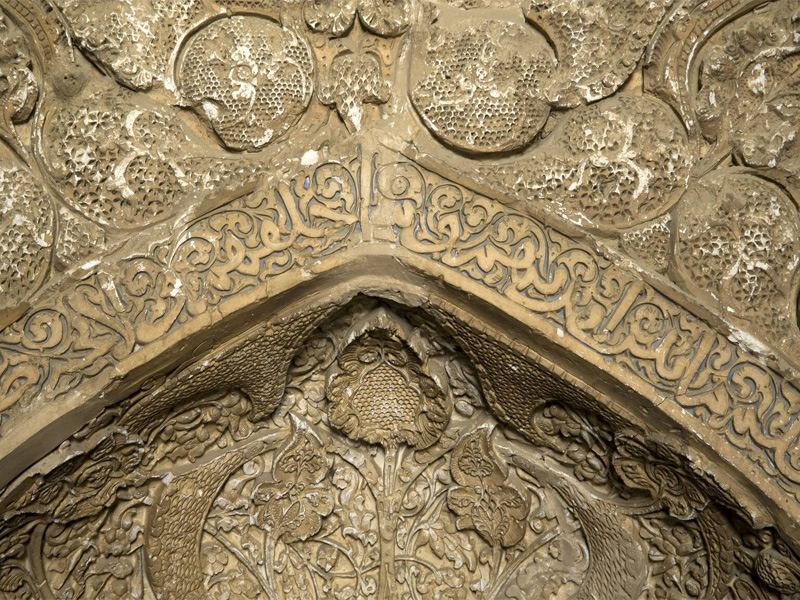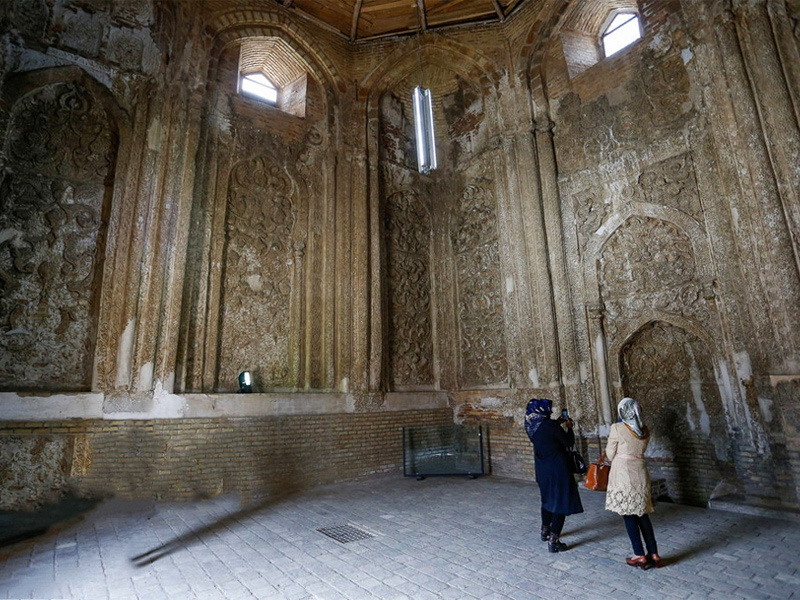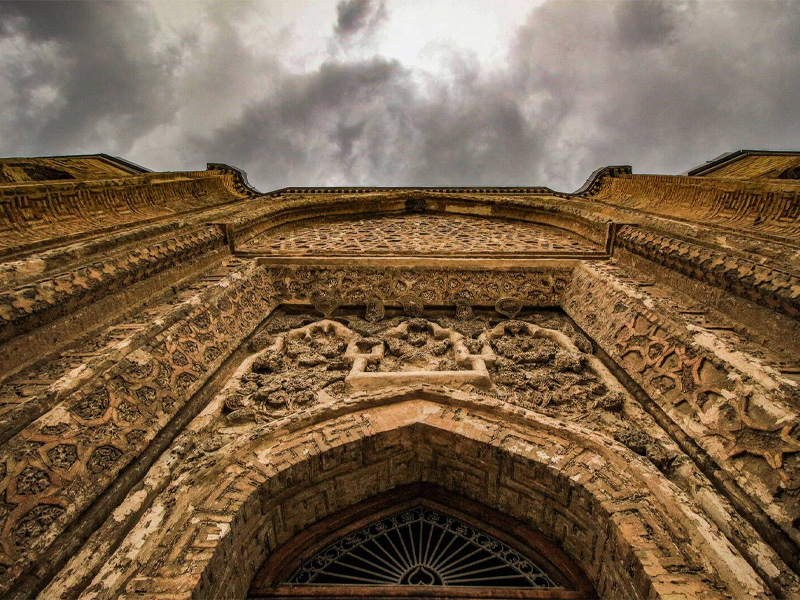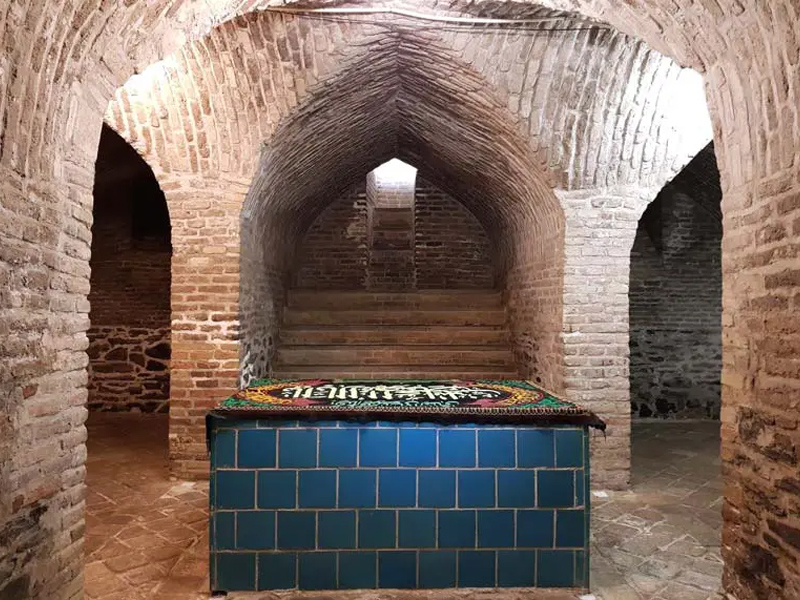Hamedan is one of the ancient and historical cities of Iran, with a history dating back over three thousand years. It can be considered the capital of Iran’s history and civilization. When you visit this city, you can truly feel its ancient history because, with every step you take, you come across numerous buildings from different periods of Iranian history. It’s as if you’re flipping through the pages of Iran’s historical eras. Among the historical and famous landmarks of this city, you come across a structure called the Alavian Dome.
This historical site has such magnificent architecture that it can be considered a masterpiece of post-Islamic architecture. The Alavian Dome is listed as a national heritage site in Iran and is one of the attractions that deserves your time to appreciate its architecture. This dome showcases the splendid architectural and plasterwork techniques that familiarize you with the Seljuk era, leaving you in awe of its artistic details. In this article from Eligasht, we will explore the fascinating history and architectural features of the Alavian Dome, shedding light on its significance in Persian culture and its enduring legacy.
Book Iran Air flights from London to Tehran and Tehran to London with Eligasht UK:
Where is Alavian Dome located?
To visit the Alavian Dome, you need to go to Chahar Bagh, located near Imamzadeh Abdullah Square. As soon as your eyes catch a glimpse of its exterior, you’ll realize that the architecture of this historical structure is one of the most unique examples of Islamic architecture. This dome, which beautifully represents the religious past of the people in this region, has always attracted numerous researchers to explore Iran’s history. Until a few years ago, the Alavian Dome was situated in the vicinity of a small school, which might have overlooked its distinctive architecture and perhaps not received the attention it deserved. However, with the recent development and opening of the surrounding area, you can now fully appreciate this building and spend hours admiring its intricate plasterwork decorations.
Why doesn’t the Alavian Dome have Dome Shape?
Seeing this place, you’ll probably notice the flat roof of the building and ask yourself why despite the name “Alavian Dome,” there is no dome on the building. The answer is that the roof of this monument in the past was dome-shaped, but over time it was worn out and eventually, its dome was destroyed, and today it has no domes. This historic dome of the Seljuk era today has a flat roof and is square cube-shaped, yet it looks simple, bold, and original.

A Look at the History of the Alavian Dome
The origins of this structure date back to the 6th century AH (12th century CE) during the late Seljuk period. At that time, it was built as a mosque for the Alaviyan family to perform their prayers. However, years later, a crypt was added beneath the building, transforming it into a mausoleum for the family. You may wonder why it is called the Alavian Dome when there is no dome on the structure. The reason is that the building had a dome in the past, but it collapsed over the years due to its deteriorating structure. Nonetheless, the walls of the building remain intact and untouched. Two members of the Alaviyan family are buried in this dome, and the respect and admiration of the people for the Seyyeds (descendants of Prophet Muhammad) led to its naming as the Alavian Dome.
The Fascinating Alavian Dome
The Alavian Dome has a rectangular shape with star-shaped edges in its corners. In 1938, the Cultural Heritage Organization undertook the restoration and renovation of this historical building. The roof was covered with wood and tiles to protect it from the effects of weather. However, throughout the years, this structure has undergone several repairs and extensive renovations. If you look at other rectangular mausoleums in different parts of Iran, it becomes evident that all these mausoleums are elevated above ground level and situated on a platform. To reach the entrance door of the mausoleum in this building, you need to climb nine steps and reach the top of the platform. The surroundings of this building have been fenced by the Cultural Heritage Organization to ensure its proper preservation.

A Glimpse of the Architecture of the Alavian Dome
The plasterwork and brickwork used in this building are so skillfully executed that they have turned it into a valuable and noteworthy piece of art. When you see the exterior facade of this building, you may find some resemblance to the Red Dome of Maragheh, as they share some visual similarities. Before entering the prominent entrance of this tower-like structure, raise your head and observe the rectangular frame above the entrance up close. Here, you will witness admirable plasterwork, intricately intertwined in the form of flowers and bushes.
On the outer edge of this frame, several verses from the Holy Quran are inscribed in Kufic calligraphy, creating a captivating display. It is this attention to detail that has made the overall composition of this building magnificent and exemplary. Upon entering the building, you will face a room measuring 8 meters by 8 meters, beautifully adorned with dense and visually appealing plasterwork. This interior chamber may remind you of the Heydariyeh Dome in Qazvin.
To see one of the most beautiful interior parts of this building, you need to go to the southern side where you will find a mihrab. Throughout the mihrab, remarkable plasterwork is scattered, demanding hours of admiration. The interior light of this building is provided by several windows located near the ceiling. Inside the northeastern tower, there are narrow and steep stairs that, if followed, lead you to the ceiling. In the mihrab, you will also encounter a peculiar staircase that takes you to the basement floor. In this basement, there are the tombs of two prominent members of the Alaviyan family. The basement itself has interesting architecture, featuring six small chambers with arched niches, and in the center, you will see two rectangular tombs. These tombs are covered with glazed turquoise tiles.
Best time to visit Gonbad Alavian
Hamadan generally has a cool and cold climate, which is why most tourists choose the spring or summer season for the city. Of course, if you can tolerate the cold of this city, winter is also a good season to visit this city and this monument, because the city is covered with snow and it takes on a unique face. We recommend that you visit this work during the day and when the weather is bright to enjoy the view of the Alavian Dome in Hamedan and its surroundings, although the lighting of the dome is also spectacular at night.

Preservation Efforts
Over the centuries, the Alavian Dome has faced various challenges, including natural disasters and neglect. However, efforts have been made to preserve and restore this architectural gem. Conservation projects have been undertaken to ensure the structural integrity of the dome and to protect its ornamental details. These preservation efforts aim to safeguard the Alavian Dome for future generations, allowing them to appreciate its beauty and historical significance.
Related post
The Avicenna mausoleum in Hamadan, the Most Famous Iranian Physician in the World.
The Alamut Castle, a place to witness history and nature
Final words
The Alavian Dome in Hamedan stands as a remarkable example of Persian architecture from the Seljuk period. Its intricate design, ornamental details, and cultural significance make it a must-visit destination for history and architecture enthusiasts. As visitors step inside the dome, they are transported back in time, marveling at the craftsmanship and artistic prowess of the craftsmen who built this architectural marvel. The preservation efforts undertaken to safeguard the dome ensure that future generations can continue to appreciate and admire its beauty.

FAQ
1- Can visitors enter the Alavian Dome?
Yes, visitors are allowed to enter the Alavian Dome and explore its interior. However, it is important to respect the cultural and historical significance of the site and follow any guidelines or restrictions set by the authorities.
2- Are there any other historical sites to visit in Hamedan?
Hamedan is home to several other historical sites, including the Tomb of Esther and Mordechai, the Ganjnameh Inscriptions, and the Avicenna Mausoleum. These sites offer a glimpse into the rich history and culture of the region.
3- Is photography allowed inside the Alavian Dome?
Photography is generally allowed inside the Alavian Dome. However, it is advisable to check with the authorities or guides present at the site to ensure that there are no specific restrictions or guidelines regarding photography.
4- Are there any nearby attractions to visit along with the Alavian Dome?
Yes, there are several attractions near the Alavian Dome. These include the historic bazaar of Hamedan, the Ali Sadr Cave, and the Hegmataneh Archaeological Site. Exploring these attractions can provide a comprehensive experience of the rich history and culture of Hamedan.

